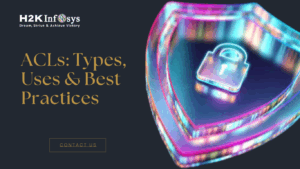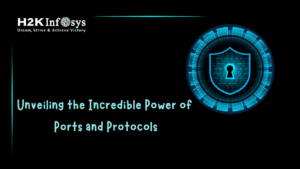A portion of the Internet known as the “Dark Web” is inaccessible using conventional web browsers and search engines. Rather, Dark websites can be viewed with specialised browsers, either by utilising a dedicated Dark Web search engine or by knowing the exact URL.
The fact that the Dark Web offers more privacy and anonymity than the Surface Web is one of its key advantages. This is useful for a number of reasons, such as funding illegal activity or shielding journalists, activists, and other individuals whose lives would be in jeopardy if their identities were made public. You can check out our cyber security hands-on training to learn more.
What Can You Find on the Dark Web?
Because the Dark Web is made to preserve user anonymity, it’s a perfect place for criminal activity. Hacking tools, credit card numbers and other sensitive data that has been stolen, usernames for other accounts, and a variety of other illicit goods and services can all be purchased and sold on the Dark Web.
Similar to the Surface Web, the Dark Web also hosts communities and informative websites in addition to stores. Cybercriminals frequently use Dark Web sites to coordinate and organise their assaults. You can also obtain information on data breaches and cyberattacks on the Dark Web.
Entering the Dark Web
The Tor Network, a system that was first created by the US government to allow activists and other like-minded parties to communicate anonymously, serves as the foundation for the Dark Web. Every request that travels via the Tor Network makes many hops in order to increase the difficulty of identifying the source and destination of a given request. A browser that supports Tor is necessary in order to access the Dark Web. This will protect your anonymity when exploring the Dark Web by directing all requests through the proxy servers of the Tor Network.
However, accessing the Dark Web requires more than just a browser that supports Tor. Additionally, you must know where to go. Addresses on the Dark Web end in .onion. You can use a Dark Web search engine or visit websites if you know their address. These search engines might not be able to locate every website on the Dark Web, though, as they frequently have bugs.
Difference Between the Deep Web and the Dark Web
Similar to each other, the Deep Web and the Dark Web are not a part of the surface Web, which is the collection of websites that Google and other search engines index. These two Internet subdomains, however, are extremely unlikely.
The Deep Web is accessible with a conventional web browser, in contrast to the Dark Web. You most likely utilise the Deep Web on a daily basis. The part of the Internet that search engines don’t index because the pages are protected in some way or demand authentication is known as the “Deep Web.” The Deep Web includes your secret account pages for all of your online services, including corporate apps, social networking, email, and others. The confidentiality that is provided by Deep Web pages shields private information from prying eyes. On the other side, privacy and anonymity are available on the Dark Web.
Risks of Accessing the Dark Web
There are legitimate uses for the Dark Web, such as safeguarding journalists’ and other parties’ anonymity. The Dark Web can be risky to explore, though, as a significant amount of its content is related to illicit activity. Although the Tor Network might hide your IP address, you run the risk of losing your anonymity if you unintentionally divulge certain details. Furthermore, websites on the Dark Web can have malware on them and probably include offensive and illegal content.
Top Principles to Follow in Order to Remain Safe on the Dark Web
Using the Dark Web is not prohibited. To stay up to date with the recent cybersecurity risks, a lot of security professionals actually conduct research on the Dark Web. On the other hand, use caution when using the Dark Web.
When browsing the Dark Web, the following are some best practices:
- Use a Reputable Browser: Some browsers are compromised with spyware or monitoring code, and accessing the Dark Web requires a browser that is compatible with Tor. Get the Tor browser from a reputable source, such as the Tor project website (torproject.org).
- Use a VPN: Traffic travelling through the Tor Network can be seen by an ISP, but traffic coming from the Tor Network is hidden. Using a VPN can aid in preventing eavesdropping.
- Use Secure Email: Use of your regular email address is discouraged when browsing the Dark Web. Instead, encrypt messages using PGP and utilise a burner email address.
- Turn off JavaScript: JavaScript has the potential to gather private information or carry out other nefarious deeds within your browser. Before browsing the Dark Web, make sure you turn it off in your Tor browser.
- Go to Legitimate Websites: Many websites with illicit, dangerous, or disturbing content can be found on the Dark Web. Before viewing any website, be sure it is legitimate.
Conclusion
To learn more about the Dark Web, check out our online course for cyber security.



























